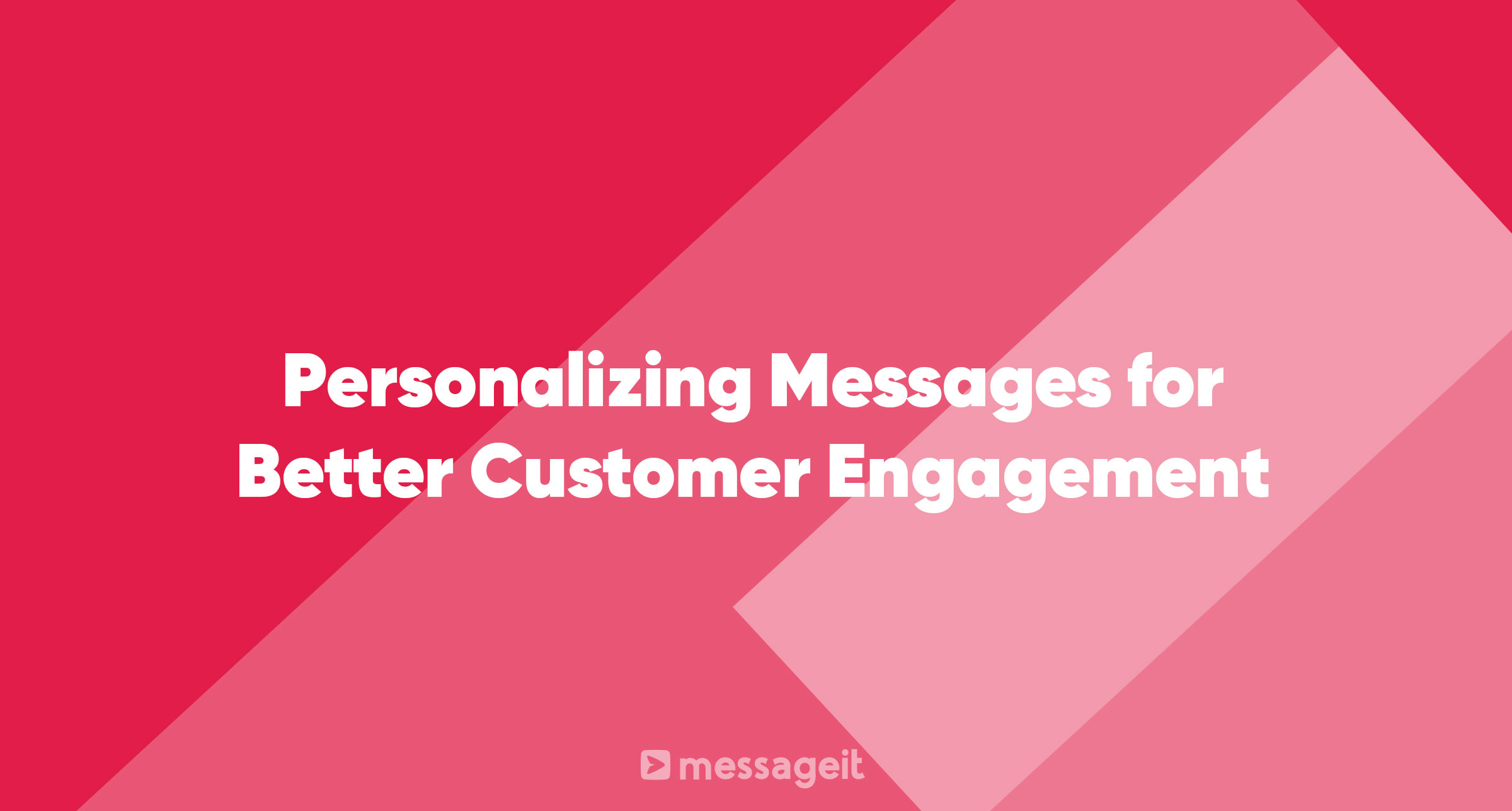In today's fast-paced digital world, customers are bombarded with countless messages every day. From emails to social media notifications, the sheer volume can be overwhelming. So, how can businesses stand out and make a lasting impression? The answer lies in personalization. By tailoring messages to individual customers, businesses can foster deeper connections and drive better engagement. Let's dive into the world of personalized messaging and discover its magic.
1. What is Personalized Messaging?
At its core, personalized messaging is about treating each customer as a unique individual. Instead of sending generic, one-size-fits-all messages, businesses use data and insights to tailor their communication to each recipient. This could be as simple as addressing the customer by their first name or as complex as recommending products based on their browsing history.
2. Why Personalization Matters
Imagine receiving a birthday card that simply says, "Happy Birthday, Person!" It lacks warmth and feels impersonal. Now, imagine a card that says, "Happy Birthday, [Your Name]! Remember that fun trip we took last summer?" The second card feels special because it's tailored just for you.
Similarly, personalized messages make customers feel valued and understood. Here's why they're so effective:
- Relevance: Personalized messages are more relevant to the recipient, making them more likely to engage.
- Emotional Connection: They foster a deeper emotional connection between the brand and the customer.
- Higher Conversion Rates: Personalized messages often lead to higher conversion rates as they resonate more with the recipient.
3. How to Personalize Your Messages
Ready to jump into the world of personalized messaging? Here are some steps to get you started:
a. Gather Data: The foundation of personalization is data. Collect information about your customers through sign-up forms, surveys, and tracking their interactions with your website or app.
b. Segment Your Audience: Group your customers based on shared characteristics or behaviors. For example, you could segment by age, location, purchase history, or interests.
c. Tailor Your Content: Create content that speaks to each segment. For instance, if you're a clothing retailer, you might send winter coat recommendations to customers in colder regions and swimsuit suggestions to those in warmer areas.
d. Use Technology: There are many tools available that can help automate and streamline the personalization process. Email marketing platforms, for instance, can automatically insert a customer's name into the subject line or body of an email.
4. Best Practices for Personalized Messaging
While personalization is powerful, it's essential to strike the right balance. Here are some best practices to keep in mind:
- Respect Privacy: Always obtain permission before collecting or using personal data. Be transparent about how you'll use the information.
- Test and Optimize: Regularly test different personalization strategies to see what resonates most with your audience. A/B testing can be particularly useful here.
- Keep It Genuine: Personalization should feel authentic, not creepy. Avoid over-personalizing to the point where it feels invasive.
5. Real-World Examples
To illustrate the power of personalized messaging, let's look at some real-world examples:
- Netflix: Ever noticed how Netflix recommends shows or movies? They use viewing history and preferences to suggest content that's likely to resonate with each user.
- Amazon: When shopping on Amazon, you'll often see product recommendations based on your browsing history and past purchases.
- Spotify: The "Discover Weekly" playlist is a perfect example of personalization. Spotify curates a list of songs based on your listening habits, introducing you to new music tailored to your tastes.
6. The Future of Personalized Messaging
As technology continues to evolve, so will the possibilities for personalized messaging. With the rise of artificial intelligence and machine learning, businesses will be able to understand their customers on an even deeper level, paving the way for hyper-personalized experiences.
Imagine a world where your smart fridge knows when you're running low on milk and sends you a reminder to pick some up. Or a fitness app that crafts a workout plan based on your personal goals and preferences. The possibilities are endless!
Conclusion
In a world overflowing with generic messages, personalization is the key to standing out and forging genuine connections with customers. By understanding and catering to each customer's unique needs and preferences, businesses can elevate their communication strategies and drive better engagement.
So, the next time you're crafting a message, ask yourself: "How can I make this more personal?" The answer might just be the key to unlocking deeper customer loyalty and driving business growth.
